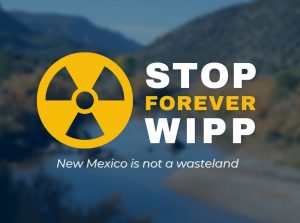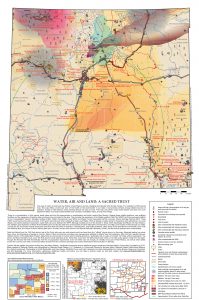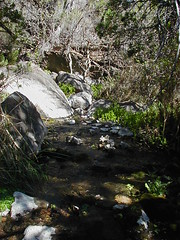LANL Plutonium Facility Is Priority Concern for DNFSB
CCNS NEWS UPDATE
Runs 9/19/14 through 9/26/14
(THEME UP AND UNDER) This is the CCNS News Update, an overview of the latest nuclear safety issues, brought to you every week by Concerned Citizens for Nuclear Safety. Here is this week’s top headline:
- LANL Plutonium Facility Is Priority Concern for DNFSB
Citing its priority concerns across the nuclear weapons complex in a recent letter to the Department of Energy (DOE), the Defense Nuclear Facility Safety Board once again raised the vulnerability of the Plutonium Facility at Los Alamos National Laboratory (LANL) to a collapse and fire resulting from an earthquake. In November 2012, LANL estimated that such an event could release radioactive materials to the public located off-site at a level of approximately 940 rems. http://www.dnfsb.gov/sites/default/files/Board%20Activities/Reports/Site%20Rep%20Weekly%20Reports/Los%20Alamos%20National%20Laboratory/2013/wr_20130201_65.pdf One rem is a large dose of radiation and exposure to 100 rems or more over a short amount of time can cause acute radiation syndrome and death.
DOE then proposed plans to mitigate the impacts of a possible catastrophic release, but has run into some yet-to-be-resolved problems. The mitigation measures could reduce the off-site exposures by 30 to 60 percent, but that would still mean a release of between 376 rems and 658 rems, which are still above DOE’s own 25 rem limit. Plutonium operations at the facility have been halted and portions restarted.
Kevin Roark, a LANL spokesperson, said, “Progress has been made over the summer toward resuming activities in [the Plutonium Facility] and we continue to work on resuming the remaining activities as quickly and safely as possible.”
In addition, the Board recently released a report about emergency preparedness and response of the DOE’s nuclear weapons complex. http://www.dnfsb.gov/sites/default/files/Board%20Activities/Recommendations/rec_2014-1_25051_0.pdf They state that emergency preparedness and response “is the last line of defense to prevent public and worker exposure to hazardous materials.”
And the DOE Inspector General recently released a report entitled, “The Readiness of the Department’s Federal Radiological Monitoring and Assessment Center,” about emergency preparedness. http://energy.gov/sites/prod/files/2014/08/f18/S13IS012%20FRMAC%20Final%20Report%2008282014_1.pdf
The Board cites problems that are similar to those experienced during the May 2000 Cerro Grande fire at LANL when DOE emergency response personnel left about half of the portable air monitors on the tarmac in Nevada. They never went back to get them, and as a result, many areas under the enormous smoke plume were not monitored. Further, DOE did not monitor the smoke plume even though it was one of its emergency response requirements to send radiation monitors up in planes. These are a few examples of the types of systematic problems encountered in February at the Waste Isolation Pilot Plant (WIPP) when two events occurred involving a fire and radiation release.
Joni Arends, of CCNS, said, “There are so deficiencies in the DOE’s emergency response capabilities, equipment maintenance and replacement, and training that must be addressed now. In order to operate facilities handling plutonium, all emergency response capabilities must be in tiptop condition. Congress must provide priority emergency preparedness funding to DOE before funding any expansion of nuclear weapons production. What is national security if we can’t protect ourselves from potential catastrophic events at facilities designed to protect national security?”
This has been the CCNS News Update. To learn more, please visit our website at http:// www.nuclearactive.org.
Tags: 940 rems, Cerro Grande fire, DNFSB, DOE, DOE Inspector General, emergency preparedness and response, Kevin Roark, LANL, mitigation measures, Plutonium Facility, WIPP















Comments
No comments so far.